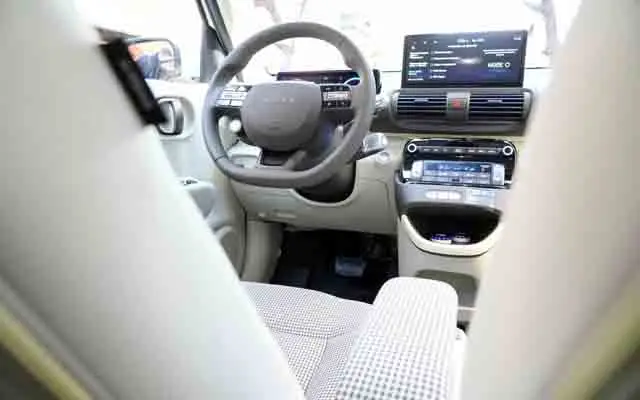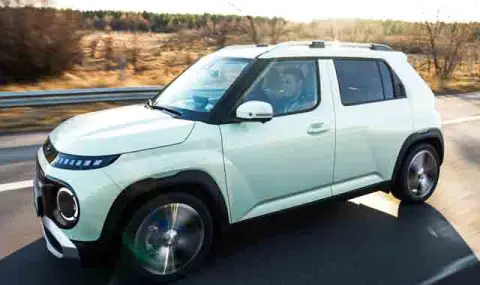It recently became clear that in South Korea, electric cars are not selling as well as Hyundai would like, but this is not the case in our country. The brand is one of those that sells the most electric cars in the domestic market and the interesting thing is that on home soil Hyundai continues to break records.
Now the most affordable electric car under the Hyundai brand is on the move, which will certainly increase sales of Korean electric cars, both in our country and throughout Europe. We are talking about the Inster model. We tested it and our initial impressions are of an excellent city car with a lot of space in the cabin, which is also suitable for moderately long out-of-town trips.
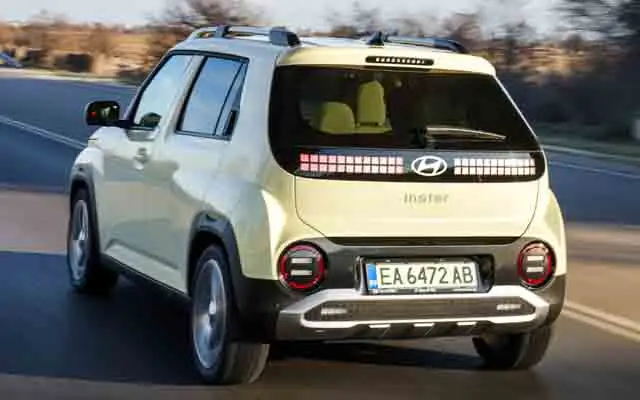
Naturally, this car has its shortcomings, but when you are not in contact with it every day, it is easy to see them (in this case, terribly slow acceleration, too many beeps, etc.), but this is nothing compared to what the new Hyundai Inster gives you - an enormous amount of new technology for its price. Here's how we actually saw it.
Exterior
The first thing that catches your eye is the unconventional appearance for mass cars in Europe and in our country. It is known that the Koreans are not afraid to experiment with design, but here they have surpassed themselves. The car looks (in our opinion) particularly attractive and modern. With its 3.83 meters in length, the Inster is significantly shorter than the Ioniq 5 or Kia EV3, which gives the hatchback a real feeling of a car “created for traffic in big cities“. This is a delightful, but imperfect, city electric car that will understandably be a desirable option for young people with an active urban lifestyle.
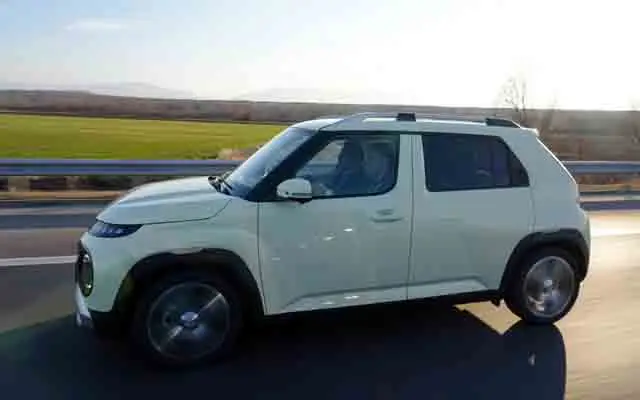
For this type of person, the Inster is certainly a bargain. Starting at 49,990, that's about 25,000 leva more than the Hyundai Ioniq 5, with excellent basic equipment, this electric car is one of the cheapest in our country (only the Dacia Spring is cheaper, but the Romanian offering is inferior in terms of technology and equipment). Overall, the car made a charming first impression.
The many rounded parts of the exterior – "happy" looking front and rear lights, 17-inch four-spoke alloy wheels are all things that fit stylishly into the otherwise sweet-looking car. And with accents like the pixel graphic LED lights, short overhangs, black grille and available two-tone paint, the Inster is a well-proportioned subcompact and at the same time hipster modern A-segment car, which in our opinion is another one of Hyundai's winning design lines.
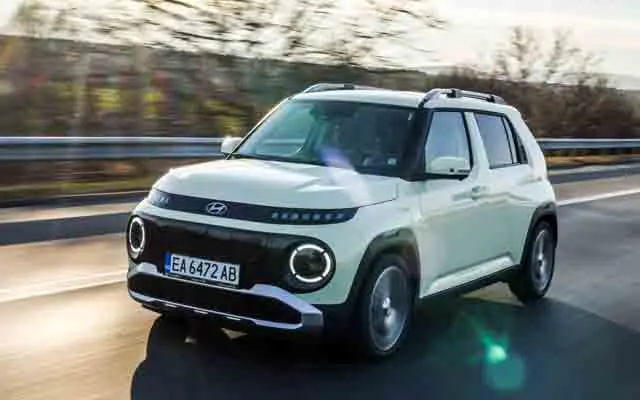
Interior
The Inster's exterior, and more specifically its dimensions, do not at all suggest what awaits you inside. As soon as you enter, you can see that the interior is far more spacious than expected. This city car is indicative of how a design with a long wheelbase and short overhangs can provide quite decent space not only in the front, but also in the rear seats.
It is curious that Hyundai uses a bench-like front seat, minimizes the storage compartment between the front seats and installs a compact console in the dashboard to create a tunnel for easy access to the passenger-side door. (this is assuming you have parked very close to a car and want to get out from the passenger side).
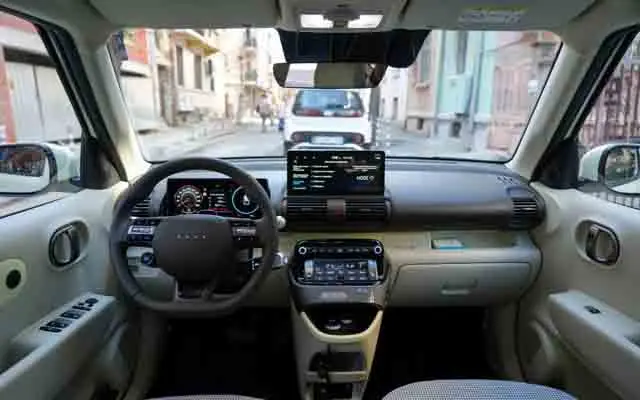
As for the instruments on the dashboard, we can say without hesitation that they are informative and intuitive to navigate. Two 10.25-inch screens - infotainment module and driver display - focus attention on the car's many functions. Specific safety and convenience features vary depending on trim, but the list of available technologies is longer than most buyers of city electric vehicles might expect.
These include forward collision avoidance assist, blind spot collision avoidance assist, driver attention warning, and intelligent cruise control with Stop & Go function. Thought has also been given to the peculiar coziness in the cabin, as the ambient lighting can be changed to one of 64 colors. There are heated and cooled front seats, a digital key, and the so-called HVAC (heating, ventilation, and air conditioning) setting to save energy. In other words, the Inster has almost all the amenities you would want in a cheaper electric car.
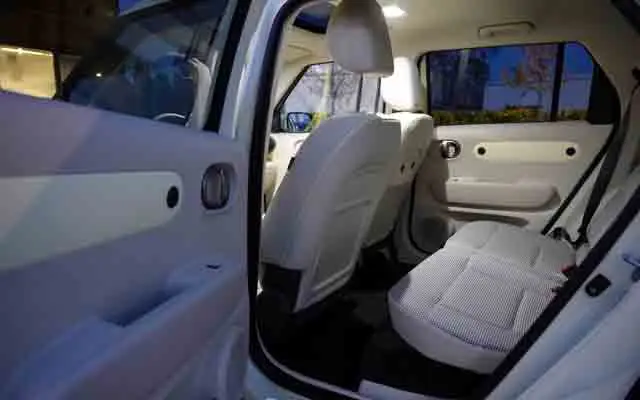
The quality of the materials is very good, as is that of the assembly itself. Practicality is visible everywhere in the cabin, with the main accent being the adjustable rear seat, which, in addition to the front-to-back direction, is equipped with functions for convenient positioning of the backrest tilt. This way, you can easily choose more space in the back row or a larger cargo volume.
Engine and driving characteristics
As we already mentioned at the beginning, the main drawback of the Inster is its weak acceleration. Even in sports mode of the more powerful version with 115 horsepower (which we tested), the car is not super fast when starting off. but it is dynamic enough for city traffic and you will not hear horns from impatient drivers behind you. The Inster's acceleration from a standstill to 100 km/h is just over 10 seconds. However, this drawback does not apply to the so-called. over-acceleration. Surprisingly, it is a fact that at a speed of 80 km/h, when you sharply step on the right pedal, the dynamics are definitely felt and overtaking is easy.
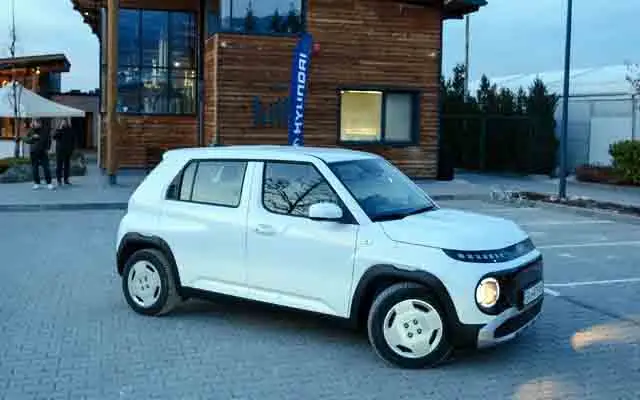
And the front-wheel drive setup provides a lot of agility with direct steering and solid balance. The suspension system (McPherson in front, and torsion beam in the rear) is ideal for smooth roads, but on more bumpy roads it still lags behind, say, the Ioniq 5, which uses Hyundai's E-GMP platform. The Inster is based on the subcompact K1 platform, which was introduced in 2017 and is otherwise used for vehicles powered by internal combustion engines.
Here, however, it has been modernized and adapted as much as possible to the electric powertrain. All this makes the Inster's ride firm, but not unbearable, or in other words, like any such A-class car. What really impressed us was the excellent, five-stage adjustable regenerative braking setting of Hyundai's i-Pedal system. In the top fifth level, it is ideal for everyday city driving. This is the optimal setting and it would be good to make it the default and you will almost forget about the brake pedal in the city.
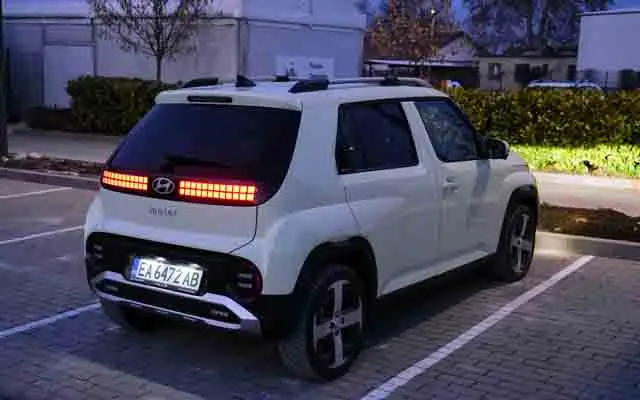
Autonomous range and charging time
When it comes to range and charging, the Inster doesn't set any records. Still, the 30-minute charging time from 10-80 percent using a 120 kW fast charger on a 49 kWh battery and a range on a full charge of 355 km according to WLTP is quite enough for the perfect city car. Unfortunately, these numbers are only for the Long-Range model with 15-inch wheels.
The Standard Range version will travel 300 km, Hyundai predicts. This with the basic package 42 kWh battery and a 97 horsepower electric motor, but here too the charging times are similar. The Inster also has an 11 kW built-in charger, which is not typical for the direct competitors of this model. The optional heat pump is also a plus for a model of this class. And by the way, for anyone looking for a more serious relationship with the Inster, the Hyundai dealership in our country also offers numerous additional accessories for customization. For example, there is a table for the back seat like on an airplane, an umbrella stand in the back, as well as options for decorating the upper door trim such as photo holders or storage nets.
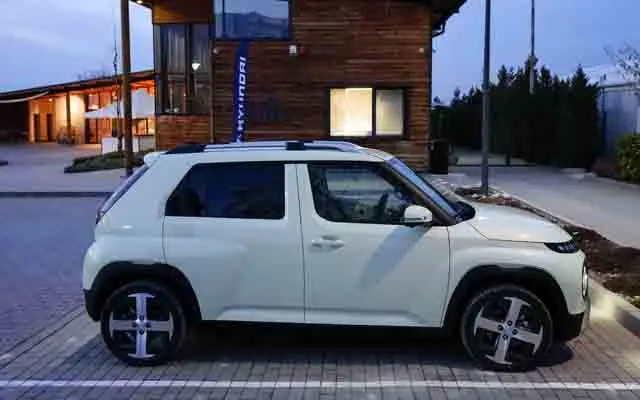
Conclusion and price
Our opinion is that this is exactly the type of electric cars today should be - ones that move mainly in the city. And the Inster is exactly such a car - perfect for everyday city driving. However, our first test showed that with this car you can safely move on the highway, at the maximum speed permitted by law, but here the expense becomes serious. Otherwise, the car is quite economical in the city and with a turning radius of 10.6 meters and a length of less than 4 meters, it is a real pleasure to drive.
As for the prices, they are not low, but they are among the lowest when it comes to electric vehicles. The price for the Inster varies in the range of 49,990 - 65,400 leva with VAT, but given what the new Inster offers, they can be defined as quite attractive. As for whether it will sell well, time will tell. There may have been no more difficult time to predict future electric vehicle sales than the present, but it's easy to see the logic in Hyundai's decision to launch affordable subcompact electric vehicles aimed primarily at the city.
